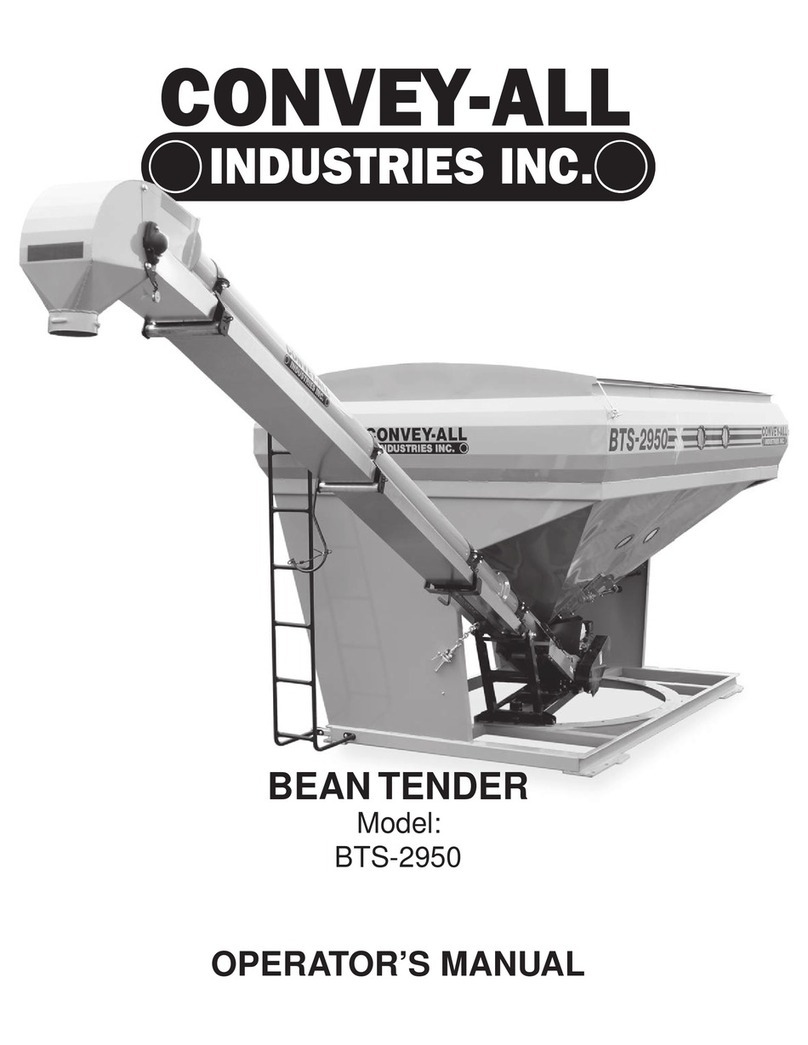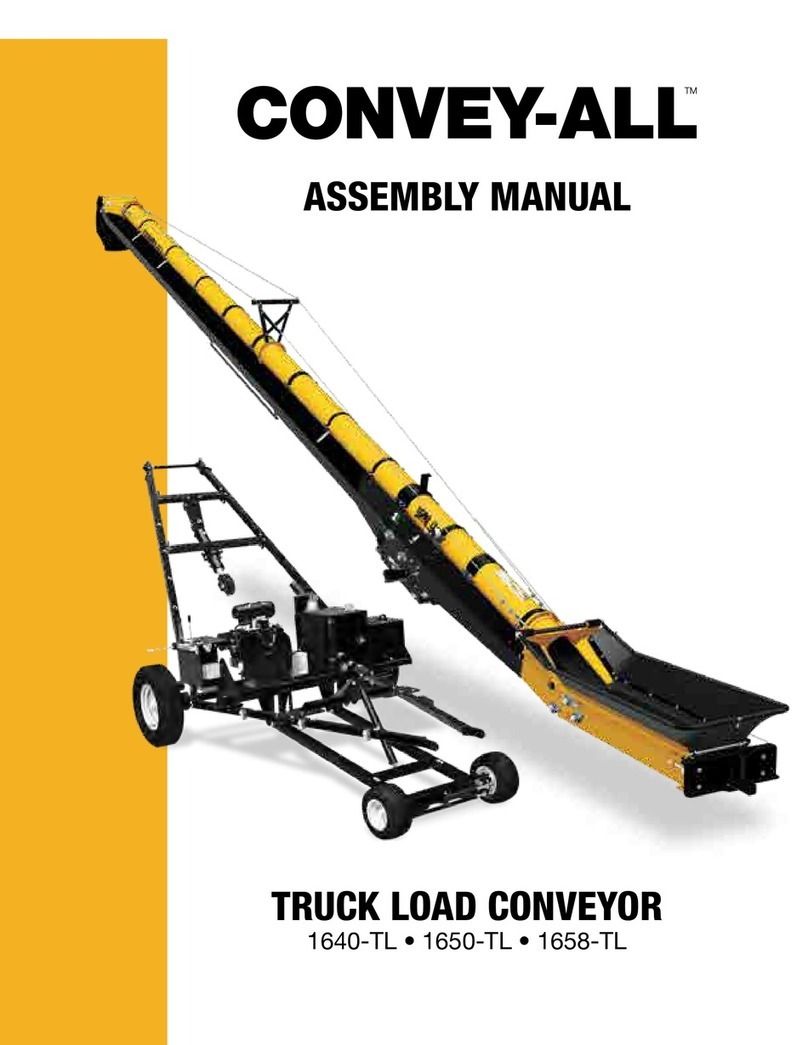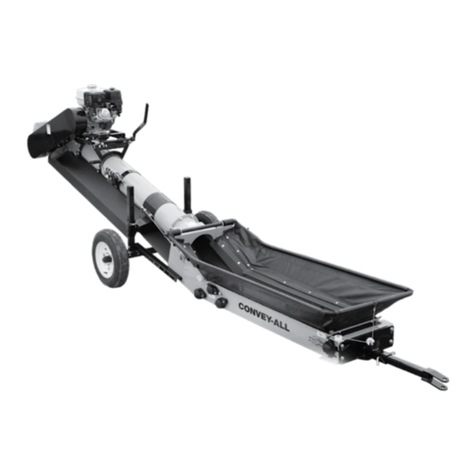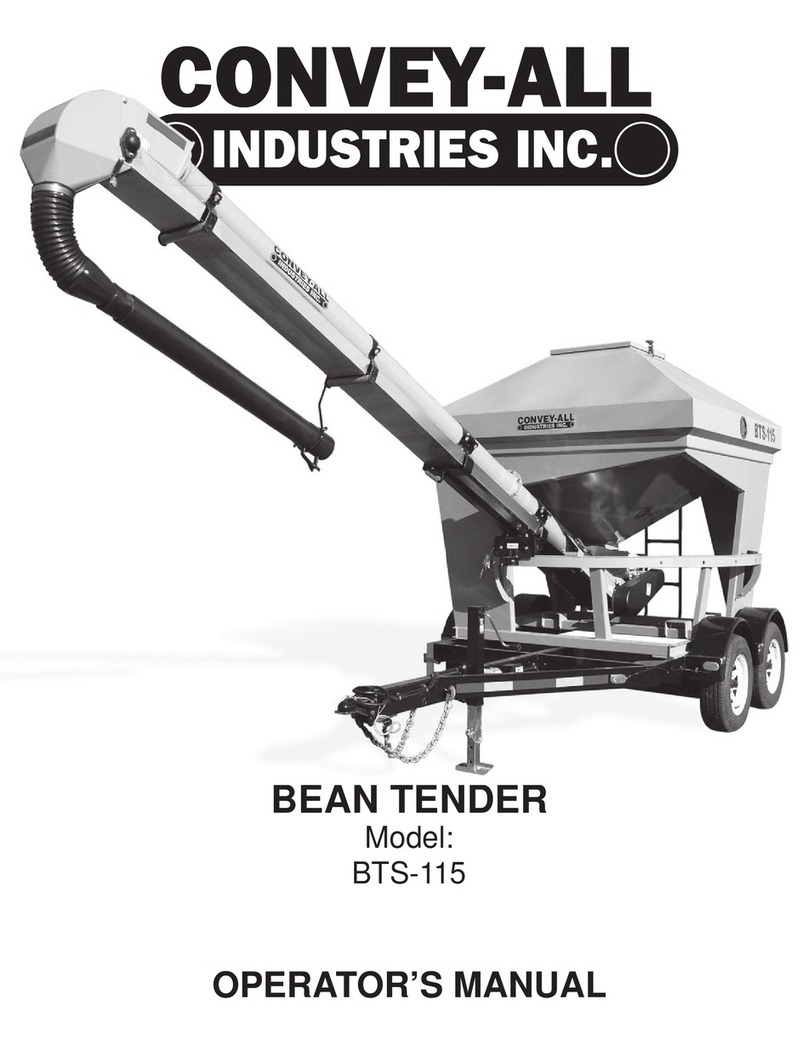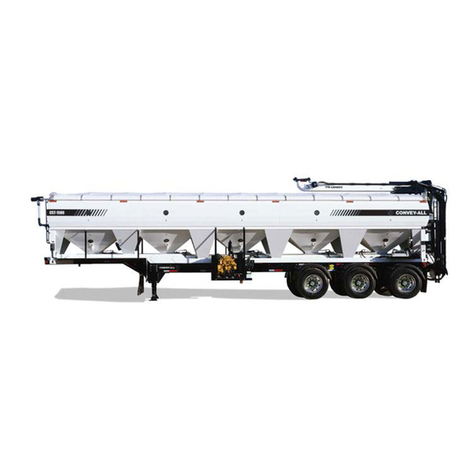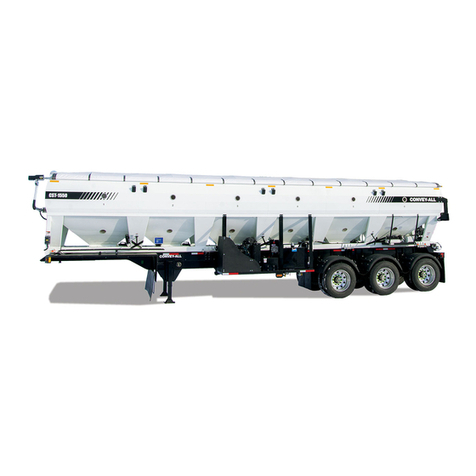
Operator’s Manual: Bean Tender-Swing Conveyor (BTS)
2-2 Revised 02.2019
2.1 SAFETY ORIENTATION
YOU are responsible for the SAFE operation and
maintenance of your Convey-All™ Bean Tender. Be
sure that everyone who will be operate, maintain or
working around it, is familiar with the safety, operating
and maintenance procedures.
This manual will take you step-by-step through your
working day. It will alert you to all the safe practices
that should be adhered to while operating the tender.
It has been said, “The best safety feature is an
informed, careful operator.” Good safety practices
not only protect you but also the people around
you. Make these practices a dynamic part of your
workday.
Most accidents can be prevented. Do not risk injury
or death by ignoring good safety practices.
•Bean tender owners must give operating
instructions to operators or employees before
allowing them to operate the machine.
Procedures must be reviewed annually thereafter,
as per OSHA (Occupational Safety and Health
Administration) regulation 1928.57.
•The most important safety device on this equipment
is a SAFE operator. It is the their responsibility to
understand all safety and operating instructions in
this document, and to follow them.
•An untrained operator exposes himself and
bystanders to possible serious injury or death.
• Think SAFETY! Work SAFELY!
2.2 GENERAL SAFETY
•Read and understand the Operator’s
Manual and all safety messages before
operating, maintaining or adjusting the
equipment.
•Only trained competent persons shall operate the
tender. An untrained operator is not qualified to
operate the machine.
•Have a first-aid kit available for use
should the need arise and know how to
use it.
•Provide a fire extinguisher for use in
case of an accident. Store in a highly
visible place.
• Do not allow riders.
•Do not allow children, spectators or bystanders
within hazard area of machine.
•Wear appropriate protective gear. This list includes
but is not limited to:
- Hard hat
- Protective shoes with
slip resistant soles
- Eye protection
- Heavy gloves
- Hearing protection
- Respirator or
filter mask
- Hi-Visibility safety vest
•Never use alcoholic beverages or drugs which can
hinder alertness or coordination while operating
this equipment.
Consult your doctor about operating this machine
while taking prescription medications.
•If the elderly are assisting with farm work, their
physical limitations need to be recognized and
accommodated.
•Review safety related items annually with all
personnel who will be operating or maintaining the
tender.
